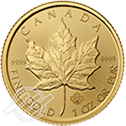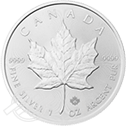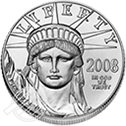Shares of GLD IS NOT the Same as Owning Physical Gold
There are numerous ways for an investor to get exposure to the precious metals markets. Investors can buy shares of mining companies, buy shares of ETFs backed by gold or silver, buy or sell gold or silver futures contracts and even purchase gold or silver certificates.
No Paper Asset Is The Same As Owning Physical Gold
GLD, for example, is an ETF, or Exchange Traded Fund, that intends to give investors a vehicle for participating in the gold market without having to take physical delivery of any gold. This ETF trades on a regulated exchange and investors purchase shares in the fund. Shares of the ETF represent a fractional, undivided ownership interest in the assets of the trust. Those assets are comprised of gold bullion and sometimes cash as well.
For those looking to trade in and out of gold and potentially profit from short-term fluctuations in the price of gold, GLD could potentially be a useful vehicle.
For those wishing to own gold for its lack of counterparty risk, or to have in case of an economic or geopolitical emergency, owning physical gold bullion is your best bet.
Owning shares of GLD IS NOT the same as owning physical gold bullion.
Why you might ask?
Here are a few key issues to consider:
- Owning shares of an ETF such as GLD DOES carry counterparty risk. There could be accounting or custody errors, theft, or other issues that affect your investment.
- You do not have access to the gold held by the trust. In the unlikely yet possible case of an economic, currency or geopolitical crises, you have no actual gold to purchase goods or services or transact with.
- You have no way to audit the holdings of a gold-backed ETF or trust. You must rely on the trust and its auditors to tell you how much actual gold the trust is holding.
- You must pay a management fee to participate in such an investment. Those who manage such a fund don’t do so for free. Management fees can have an impact on your investment.
- You cannot use your shares to buy basic necessities or barter. In a real crises, shares of GLD may simply be viewed as a piece of paper.
- If gold prices decline, your investment can lose value without the benefit of actually owning and maintaining the gold in your possession.
- You essentially have zero control. You are told how much gold the fund owns and where it is held. You have no control over the management of the gold.
Now compare this to owning actual, physical gold bullion:
- You decide how much gold to buy.
- You decide where to store your gold bullion. You can store your gold at home, in a safe deposit box, in a depository or use a combination of all three.
- You can buy and sell your gold anytime you choose.
- You can use your gold to purchase basic goods and services. In the unlikely, yet possible event of an economic, geopolitical or currency crises, you could potentially use your gold to barter and purchase basic necessities such as food, water and fuel.
- You do not pay any management fees when you own your own gold bullion.
- Physical gold bullion carries no counterparty risk. It cannot default, declare bankruptcy or otherwise fail to deliver on obligations.
- You can store your gold so that is is accessible.
The Bottom Line
As you can see, owning shares of GLD or any other “paper” gold product are not the same as owning physical gold bullion that you can touch and feel. Not even close…
If you do not own physical gold or precious metals, now may be the time to consider adding an allocation to your portfolio. If you own shares of paper gold products, now may be the time to consider additional options.
You either own gold, or you own paper…
If you are interested in learning more about the potential benefits of owning physical gold bullion, we encourage you to speak with one of our account executives today. Our precious metals professionals can show you the most convenient way to begin building a precious metals portfolio or add to existing holdings.
Talk to an IRA advisor about how to roll over your 401(k) into a Gold IRA by opening a self-directed IRA account, contact us or call us at 800-341-8584 today.



